
by teamvida | Sep 23, 2019 | General Footy, Player Development
Kicking needs to be worked on throughout all levels of Junior Footy. Even when watching some local senior footy on the weekends, it is surprising to see so many adults kicking with bad technique. The main problems we notice are;
– Two hand ball drop
– High Ball Drop
– Tossing the ball up slightly to kick
– Kicking across the line of the ball
– Ball not spinning properly
These issues can all be fixed throughout the junior development stage, and as coaches, one of your goals should be to leave players with better skills than what they came into the year with.
Main things to Work on.
The biggest thing we need to work on with our players in the ball drop. The ball drop accounts for most players ability to be a good kick or not. The ball drop is made up of
– The grip
– Alignment
– Ball drop height
– Ball drop position
Holding the ball correctly is important as it assists in getting the rest of the kick right. Players want to make sure they hold the ball with their hands on the outside of the ball. Then you want to tell your players to point the end of the ball to the ground (a lot of players will point it to where they want to kick it).
From there, you want to try and align the ball predominantly on their preferred kick side, trying to avoid swaying from left to right.
Then we want the ball drop to be below the players hips, with their fingers pointing to the ground. The opposite arm then goes out to the side to assist in balancing. Getting your players to really understand the ball drop with significantly help their kicking.
How to add technique work into a session.
During the warm-up phase of the session you can add some simple kicking (2 players one ball) to ensure plenty of volume. You can then go around to every player and asses their kick. Get players to try and hit a particular goal of kicking and marking 10 in a row, or count how many kicks they have had.
Additionally, before the session starts, players must do 100 kicks to themselves on each footy before training starts.
Throughout the training session, you can separate the group into smaller groups, and have one of those be a technique group. Remember, this is not limited to really young players, as a lot of players even up to the age of colts need to work on kicking technique.
How to add technique work into a session.
During the warm-up phase of the session you can add some simple kicking (2 players one ball) to ensure plenty of volume. You can then go around to every player and asses their kick. Get players to try and hit a particular goal of kicking and marking 10 in a row, or count how many kicks they have had.
Additionally, before the session starts, players must do 100 kicks to themselves on each footy before training starts.
Throughout the training session, you can separate the group into smaller groups, and have one of those be a technique group. Remember, this is not limited to really young players, as a lot of players even up to the age of colts need to work on kicking technique.
Suggested activities available for Vida members:
One Step Five point Kicking – Click here
Kicking Square – Click here
Kick slide and handball – Click Here
Small Kicking Grid
Kicking Technique with Anth
Forty Five Gates – Click here
Again, there are plenty more on the website. Simply tick kicking in the search options and go from there.
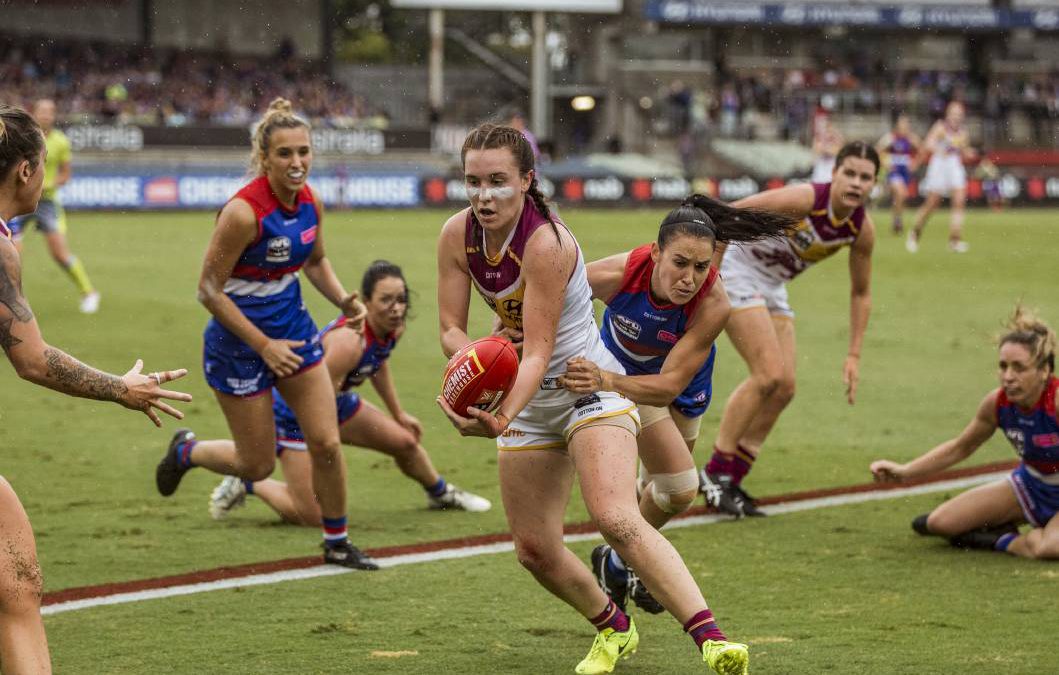
by teamvida | Sep 16, 2019 | General Footy
We have run several Skill Development Programs and Clinics at our holiday clinics. One of the main skill development areas for young players is handballing. In the past we have noticed many players still not executing the skill correctly. We suggest coaches think about ways in which you can help impact your players into being better in disposing the ball from short distances.
The main concern is that players were throwing and punching the ball out of the air and hurting their wrists, therefore they didn’t want to handball over long distances.
As coaches, we need to make sure one of the simplest skills are up to scratch.
From experience in running footy camps, weekly programs and doing private footy lessons, players should be able to handball the ball properly even at a tackers level.
Spending extra time in your session dedicated to skill acquisition with all levels and ages will see your players improve at a much faster rate. Below there are some suggested activities to implement more handballing. If you have any further questions please contact us and we can help. Have a great week!
Technique Tips.
The following technical points are crucial to enable your players to handball effectively. As your players progress, you can choose more of these points to work on.
– Hand under the ball
– End of the ball pointing slightly up
– Punch the ball with a downward motion of the back top of the ball
– Contact arm should be bent, almost to a 90 degree angle
– Punching hand to finish in holding hand
– Step forward with opposite foot when contacting the ball
– Swings arms forward to promote momentum
– Ball must spin backwards!
Suggested Activities for Vida members:
Technique Explanation #84 Click here
Kick and Slide with Handball #74 Click here
Handball Grids #104 Click here
Handball Grid with mini goals #135 Click here
There are plenty more handball related activities on the website. Please select handball when searching in the right hand side bar to refine your search.
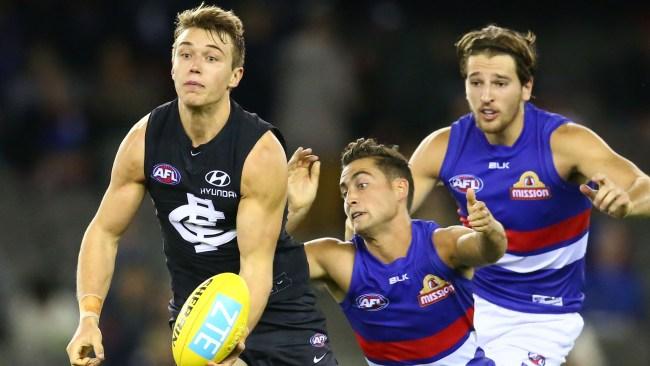
by teamvida | Sep 9, 2019 | General Footy
One of the skills that often gets forgotten at training is tackling. Teaching your players the best ways to tackle can be a crucial skill that helps the team overall, as well as the personal development each boy or girls gets. Recently, with the new rules on bumping and sling tackling, the tackle needs to be even more precise and therefore developed just as much as key skills such as kicking and hand-balling.
There are two main ways in which to teach the tackle:
1. Isolated, closed skill.
This is where you can really focus on the technical component of the tackle. Making sure your players learn to protect themselves, and also the person they are tackling.
The main technical things to convey are:
– Lead with your shoulder and the same side leg (left shoulder, left leg)
– Watch the hips of the opponent
– When tackling from behind, turn player to the side
There are several videos available to Vida members that assist with learning to tackle:
Tackling Technique no ball
Tackle evade with help
2. Open, Game sense
Once your players have a greater understanding of the technical aspects of the tackle, it’s important to practice the skill in an open environment, where real simulations from the weekend can take place.
Both players tackling, and players getting tackled need to know how to execute the skill, therefore the below activities will help in that area.
More videos for Vida members:
Tackle Square Roll and Tackle
Tackling Square with Hand-ball
Handball Grid with Mini Goals
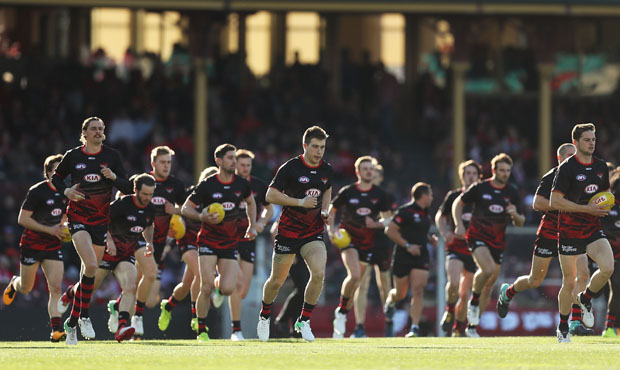
by teamvida | Aug 26, 2019 | General Footy
Warming up for a training session needs to have purpose. Additionally, there needs to be several focuses and goals within the first part of your training session. As coaches, you need to think about what you are trying to achieve through the whole session so that time is best utilised, rather than just some throw away time to get your players warm. The following factors are some of the goals you would want to achieve during the first 10 or 15 minutes of a training session;
– Players need to get physically ready for the session
– Get your players mentally ready for the session
– Touch the footy and work on closed, technical skills
– Work on good training habits and match day habits
– Plenty of touch
– Coordination and fitness activities
Suggested videos for warm-ups for Vida members:
In our video section, click on Warm-ups and all the activities that we have tagged as a “warm-up” will appear in your search results. Alternatively, click the below links to go straight to the videos. There are some composite ones where 4 or 5 activities are mixed into one warm-up, and also some individual activities you can mix into your own sequence of drills.
158 Composite Warm-up
142 Composite Warm-up
136 Composite Warm-up
137 Composite Warm-up
78 Dynamic Stretching
83 Tap-ups
120 Runway warm-up
62 Large Handball set-up
47 Self Kicks

by teamvida | Aug 19, 2019 | General Footy, Player Development
This article will go through various technical focuses that are important to incorporate from the start of the season so that players can start working on their opposite side.
We have noticed a large number of players who could kick really well of their preferred side; but kicked substantially worse on their opposite foot.
It’s important to incorporate some technical development for your players at the start of the season. Making sure players try and use their opposite foot during a game is crucial to their development as a player. Even at the AFL level, players are entering the system not being able to adequately kick on their non-preferred side.
Throughout the week you should be encouraging your players to kick on their opposite side throughout your activities, especially when pushed to that non-preferred side. Developing this tool will make that player so much better as a whole.
Think about player such as Sam Mitchel, who can get out of trouble from either side. They can also attack from either side of his body, making him a great player even if he may give away some six and speed than some other AFL Footballers.
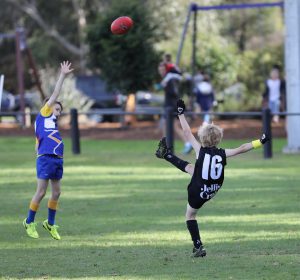
During a Game
You may not necessarily want to set KPI’s for this as the occurrence may vary. However, you would want to let your players know that they should keep their own tally of opposite foot or even opposite hands handballs. Your players will know when they should be using their non-preferred side, so therefore try to get them to tell you after the game how many times they did so when they had the chance.
After the game, have a discussion about why it is important to develop this skill and therefore try to get your players to understand the “why”. You can then use this feedback to take into your training sessions throughout the week, and reiterate the importance of the opposite side.
Some great activities available for Vida members that are usually just done with the preferred side but can be modified for the opposite side are;
Kicking Square – CLICK HERE
Warm-up Details (Do with opposite Side) – CLICK HERE
45 Gates – CLICK HERE
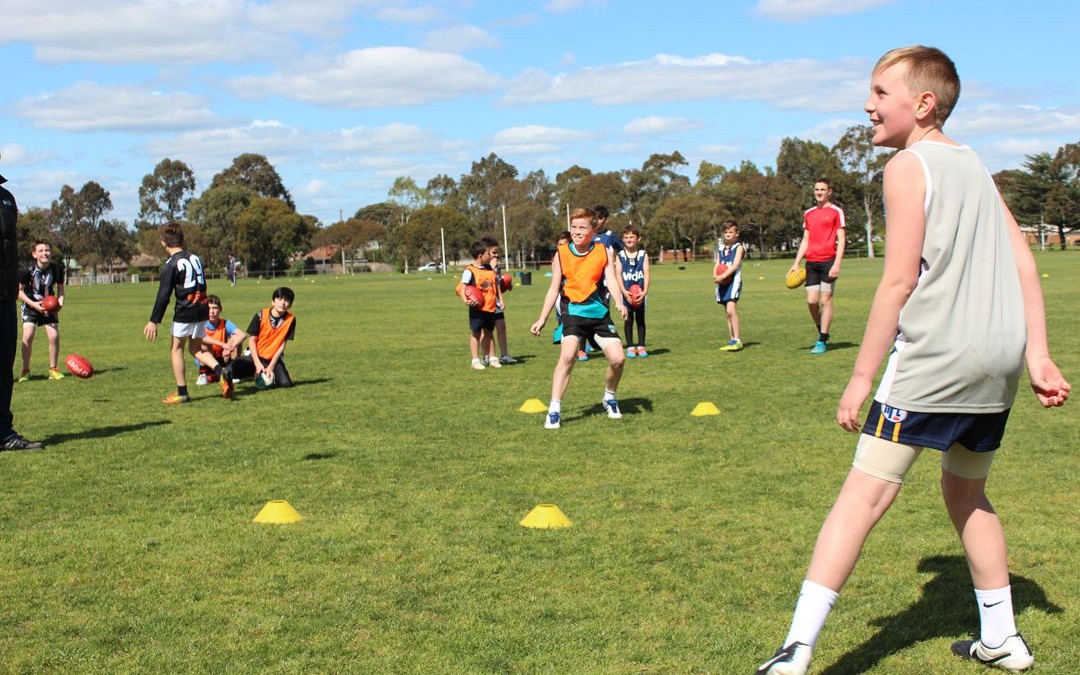
by teamvida | Aug 12, 2019 | General Footy
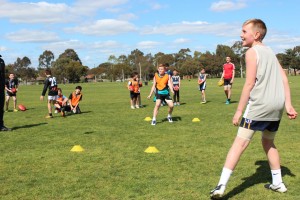 As we look into the last few games of footy, it’s important to remember to still plan and have purpose behind every training session as we prepare for finals.
As we look into the last few games of footy, it’s important to remember to still plan and have purpose behind every training session as we prepare for finals.
Skill development should never be overlooked, and if you see someone at training doing something wrong, you should still fix it. However, the main focus this week should be on game plan, touch and game sense activities. Game sense activities will get your players used of game simulation throughout the week, therefore getting them ready for finals games.
Below are some more great activities for a game sensed themed week available to Vida members:
Active Warm up with Goal Kicking. – Click here
Get your players moving with a dynamic warm up with goal kicking as part of the focus. This warm up gets your players ready for the session, as well as focusing on kicking goals from different angles.
Kicking Endzone – Click here
A grid style activity aimed at getting players to practice either transitioning forward or backwards. It’s also a great activity to get players to practice their zoning off or playing man on man.
Offensive and Defensive Transition.
Similar to the end zone activity, but gets players to work both ways in a continual effort. This is great to emphasise two way running throughout a tough game. It also enables you to work on communication, spread, and teamwork.








 As we look into the last few games of footy, it’s important to remember to still plan and have purpose behind every training session as we prepare for finals.
As we look into the last few games of footy, it’s important to remember to still plan and have purpose behind every training session as we prepare for finals.